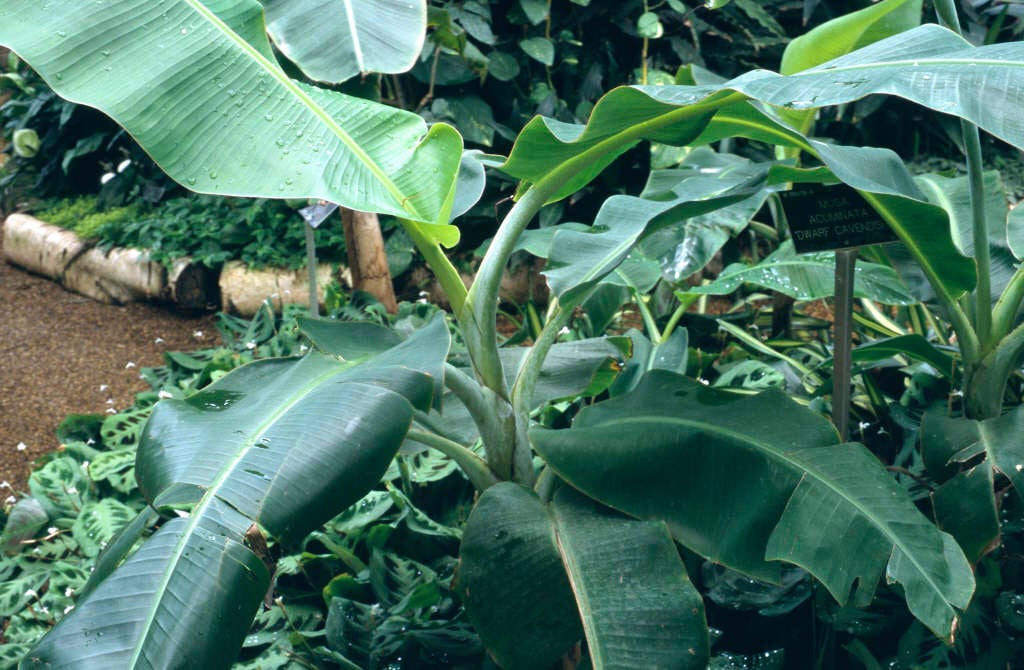Musa acuminata 'Dwarf Cavendish' (AAA Group) (F)
banana 'Dwarf Cavendish'
An evergreen perennial to 3m tall, with oblong leaves to 1.2m long; drooping spikes of yellow flowers with purple bracts open sporadically through the year, followed by edible yellow fruit
Other common names
Chinese bananadwarf banana
Size
Ultimate height
2.5–4 metresTime to ultimate height
10–20 yearsUltimate spread
1.5–2.5 metresGrowing conditions
Moisture
Moist but well–drained, Well–drainedpH
Acid, Alkaline, NeutralColour & scent
| Stem | Flower | Foliage | Fruit | |
| Spring | Yellow Purple | Green | Yellow | |
|---|---|---|---|---|
| Summer | Yellow Purple | Green | Yellow | |
| Autumn | Yellow Purple | Green | Yellow | |
| Winter | Yellow Purple | Green | Yellow |
Position
- Full sun
- Partial shade
Aspect
South–facing or East–facing or West–facing
Exposure
Sheltered Hardiness
H1BBotanical details
- Family
- Musaceae
- Native to GB / Ireland
- No
- Foliage
- Evergreen
- Habit
- Suckering
- Genus
Musa are suckering evergreen perennials with very large, paddle-shaped leaves whose stalk-bases form a false stem, and clusters of tubular flowers with colourful bracts, followed by cylindrical fruits
- Name status
Accepted
How to grow
Cultivation
As a summer bedding plant, grow in humus-rich soil in a sheltered position in full sun. In a container, use peat-free John Innes No 3 and apply a balanced liquid fertiliser monthly. At the end of the season, pot up to overwinter under cover or protect in situ with straw and chicken wire. Keep just moist in winter. See banana cultivation for further advice
Propagation
Propagate by seed as soon as ripe at 21-24°C (70-75°F). Pre-soak spring-sown seed for 24 hours . Separate suckers in early spring, removing older leaves. Divide established clumps every 5 years
Suggested planting locations and garden types
- Patio and container plants
Pruning
No pruning required under glass. Outside, remove old leaves at end of season
Pests
Glasshouse red spider mite, mealybugs and aphids may be troublesome, especially under glass
Diseases
Generally disease-free
Get involved
The Royal Horticultural Society is the UK’s leading gardening charity. We aim to enrich everyone’s life through plants, and make the UK a greener and more beautiful place.

